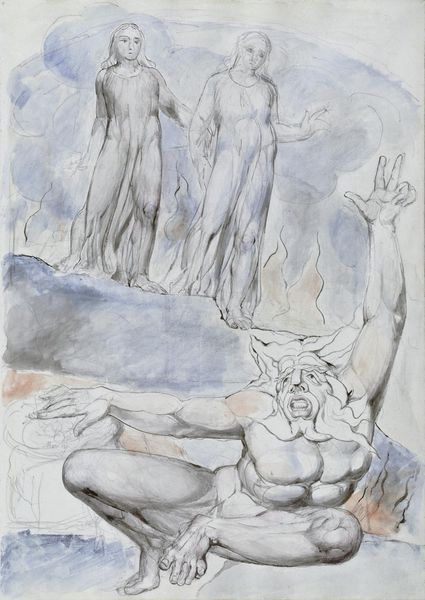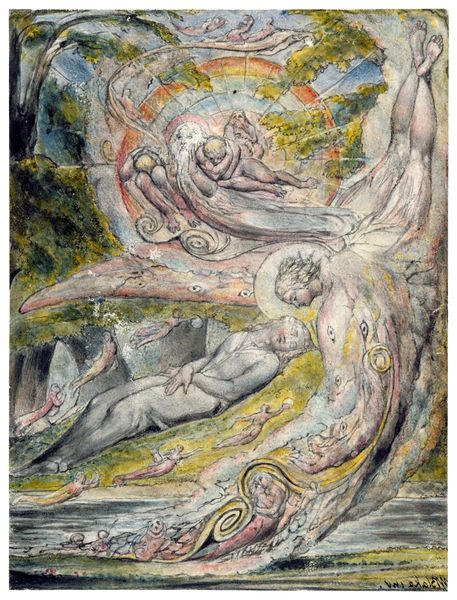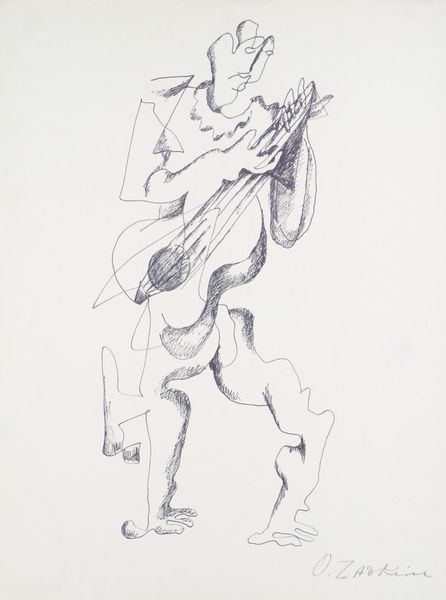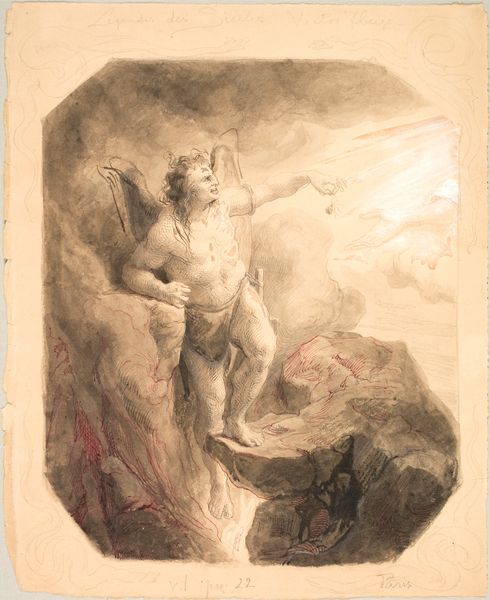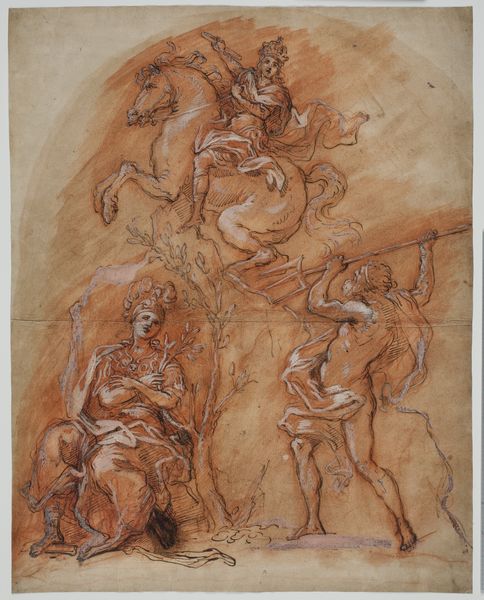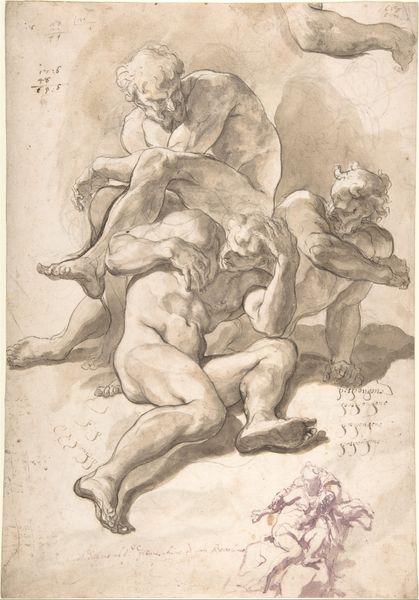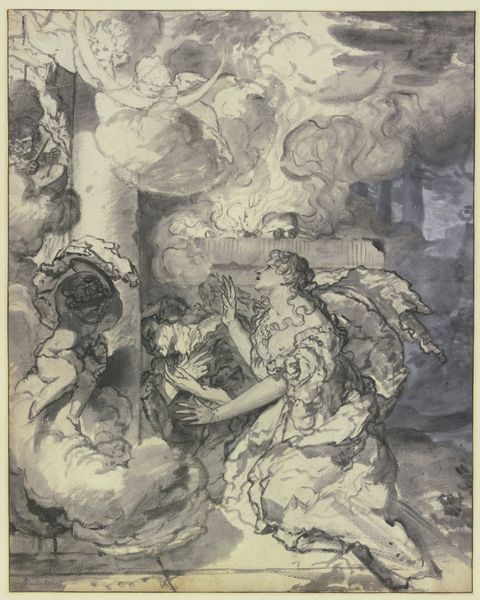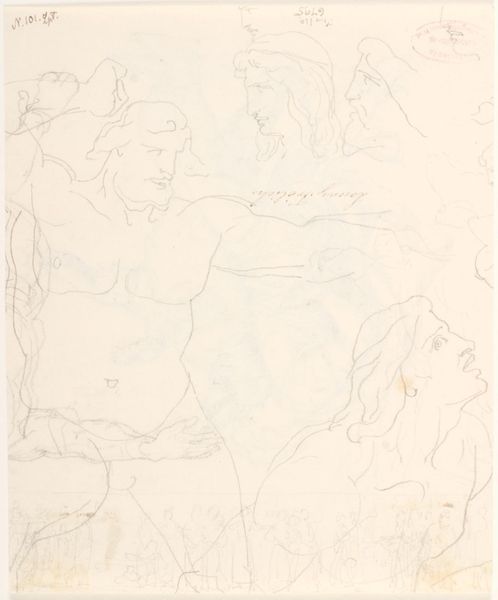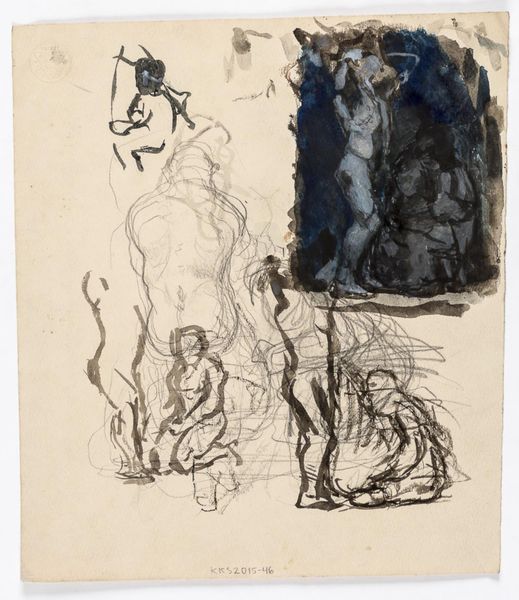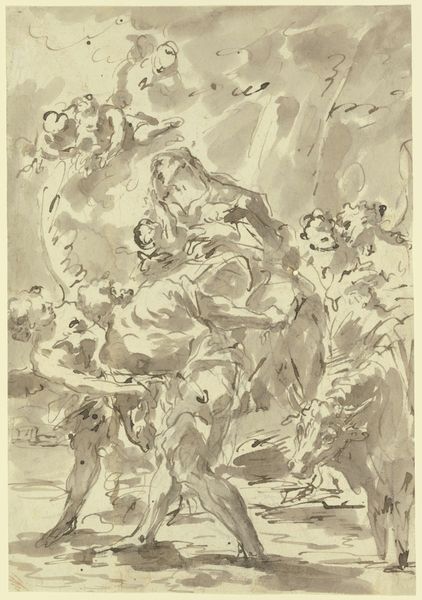
Dimensions: support: 527 x 371 mm
Copyright: CC-BY-NC-ND 4.0 DEED, Photo: Tate
Curator: William Blake's watercolor, "Plutus," currently residing at the Tate Collections, is rendered in a monochromatic palette, primarily blues and grays. Editor: The immediate impression is one of despair. That central figure is writhing, seemingly crushed beneath some unseen weight. Curator: Plutus, the Greek god of wealth, is traditionally depicted with riches, but Blake frequently critiques materialism within societal structures. Editor: Yes, observe how Blake inverts this expectation. The two figures above Plutus, pale and ethereal, almost seem to represent escape from earthly concerns. They carry a kind of Christian symbolism, perhaps. Curator: I would suggest the placement of these figures emphasizes the oppressive social and political climate he experienced. Blake often illustrated the power structures that created these psychological landscapes. Editor: It makes you wonder, doesn’t it? About the cost of earthly ambition, and what we leave behind in the pursuit of wealth. Curator: Indeed, the artwork serves as a potent commentary on the human condition within unequal economic systems. Editor: Very thought-provoking.
Comments
Join the conversation
Join millions of artists and users on Artera today and experience the ultimate creative platform.
tate 6 months ago
⋮
In Dante’s text Plutus, the god of riches, guards the souls of the avaricious. Evoking a belief commonly held at the time that the Jewish race was characterised by an unscrupulous desire for wealth, Blake’s figure has features that recall 18th-century images of Jews. Anti-Semitism permeated Lavater’s system of physiognomy, and was influenced by his personal interpretation of the Christian faith. At one stage Lavater argued that in order to achieve a higher level of existence, Jews must convert to Christianity, after which their features would begin to shed their Jewish characteristics. Gallery label, March 2011
